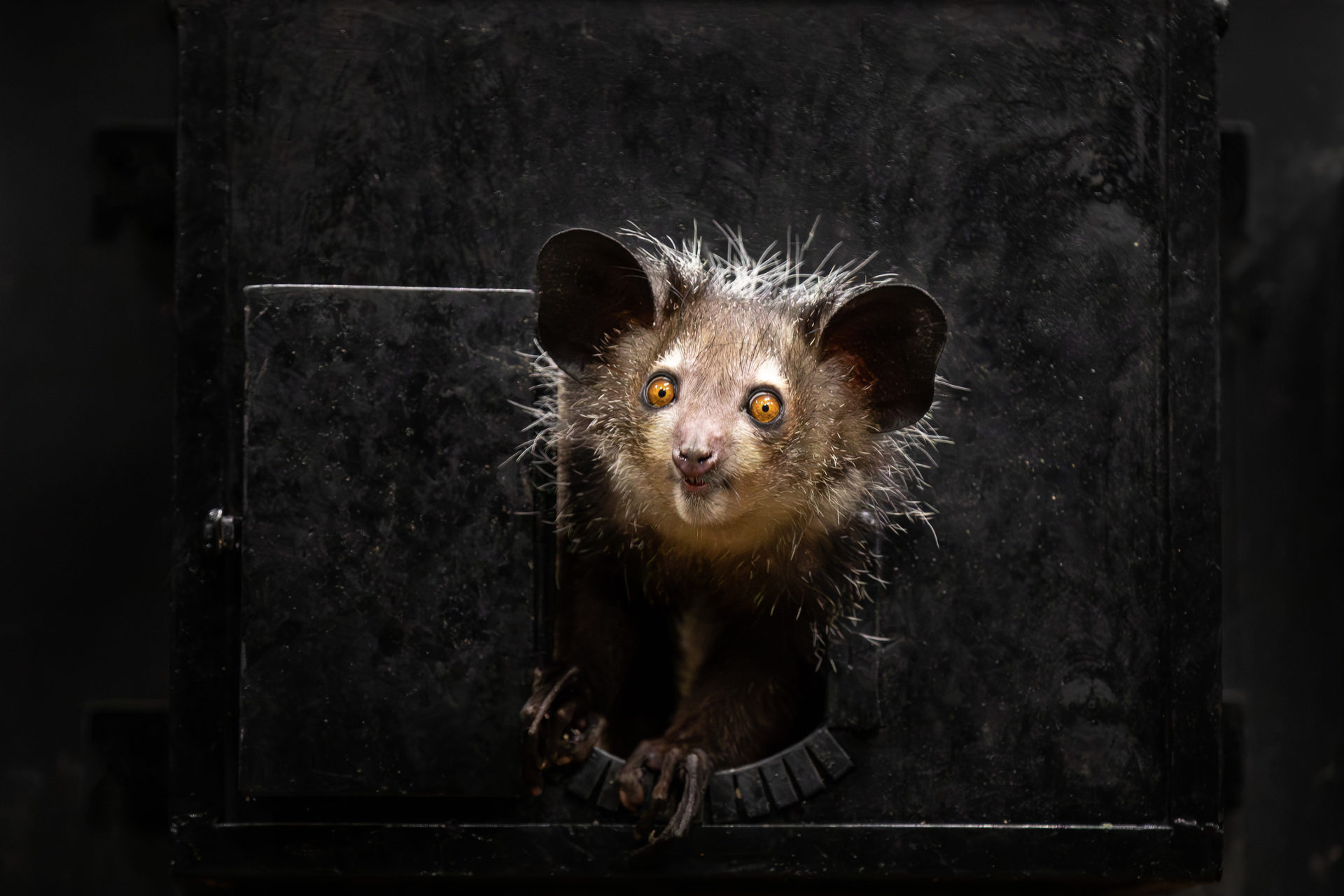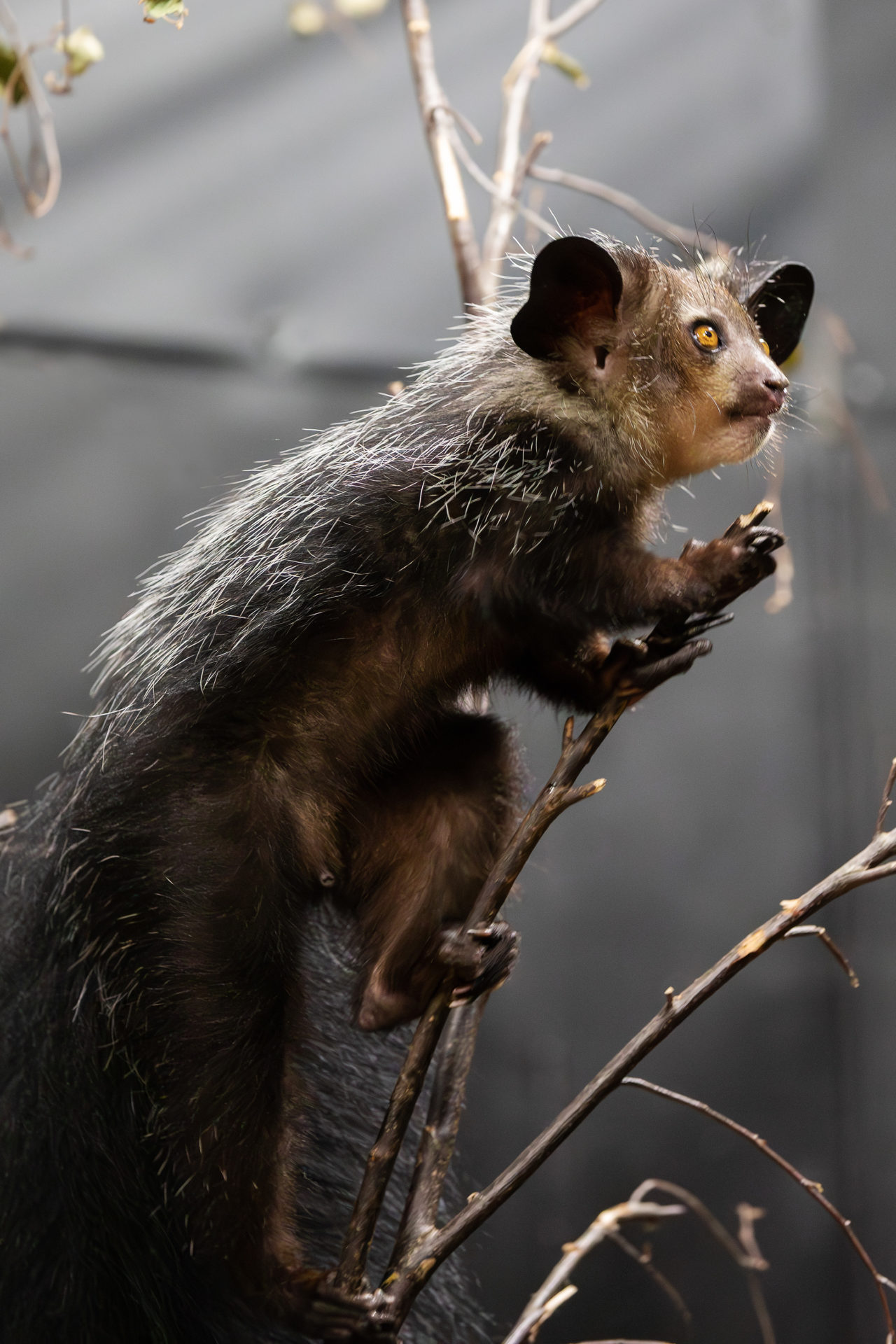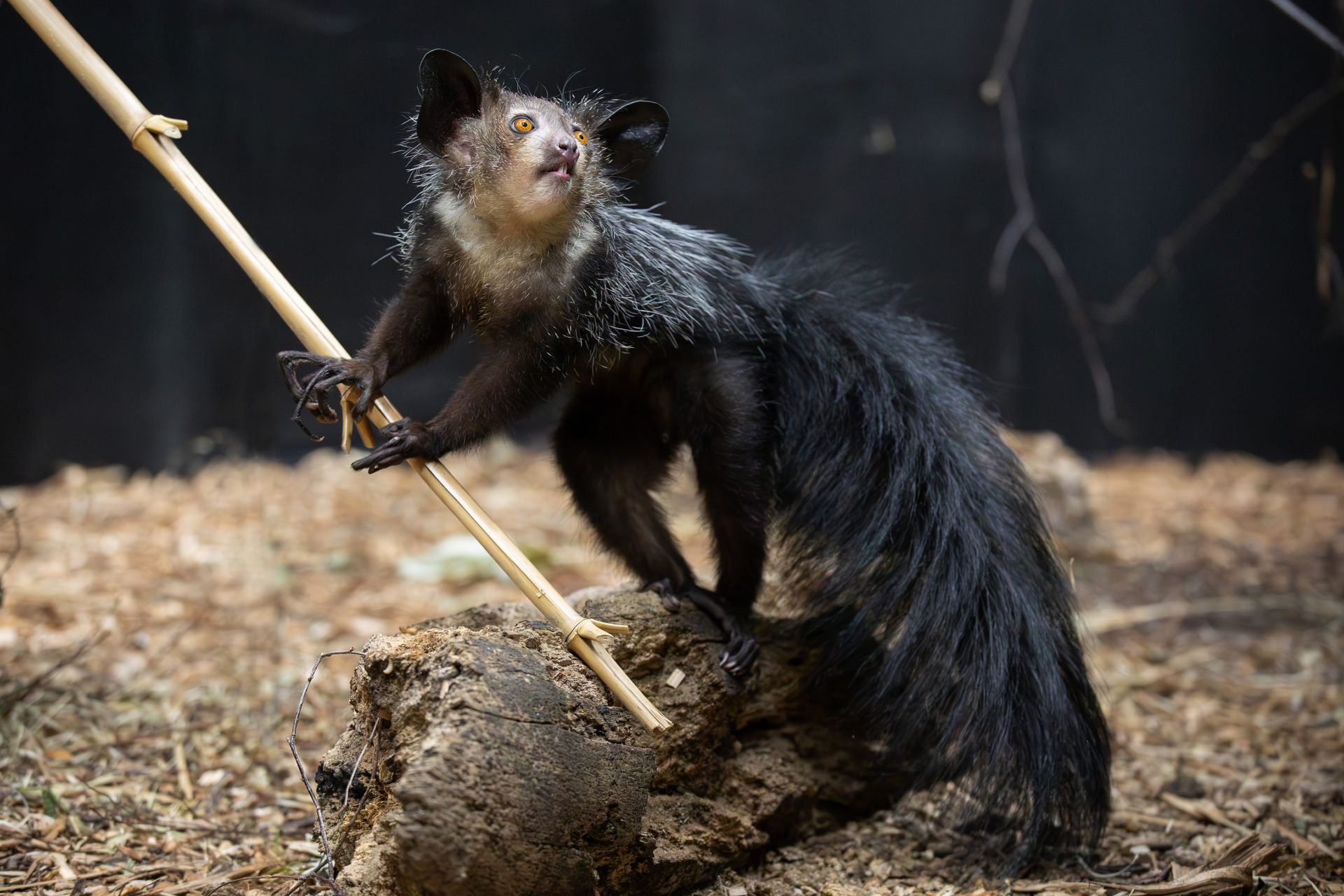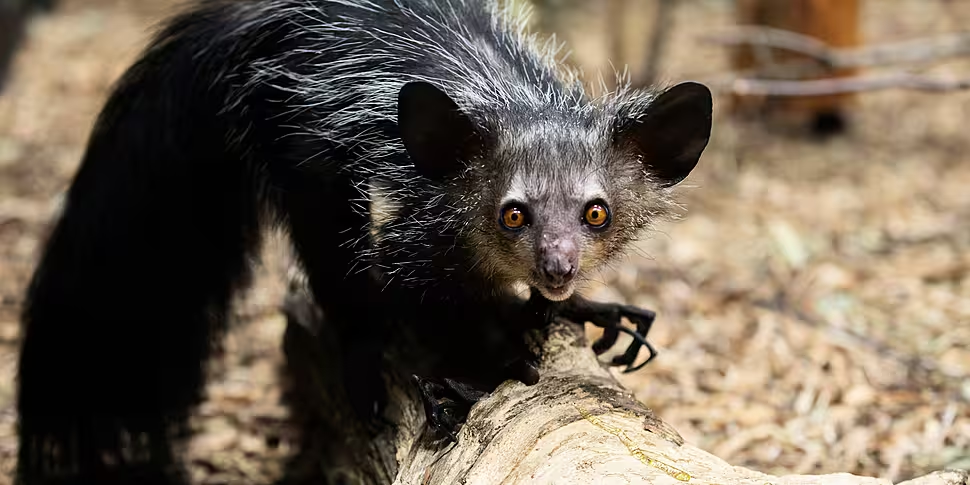The world’s largest nocturnal primate has moved into a brand-new habitat at Dublin Zoo.
The aye-aye lemur is known for its grizzly black coat, large yellow eyes and elongated middle finger – and three of the amazing creatures are now living at Dublin Zoo’s new Nocturnal House.
Local legend in the aye-aye’s home country of Madagascar once said that, if the lemur points at you with its middle finger, you are marked for impending death – with killing the defenceless animal the only way to protect yourself.
As a result, the lemurs were often killed on sight are now endangered and protected by law.
On Newstalk Breakfast this morning, Dublin Zoo Director Dr Christoph Schwitzer said he was delighted to welcome the aye-aye to Dublin.
“I really love lemurs – and you have got to love an aye-aye,” he said.
“When you look at it, it’s all black with these grizzly grey hairs, a very bushy tail and these bright large yellow eyes.
“Then they have these elongated middle fingers – a brilliant adaptation. They are just lovely, lovely creatures and I am delighted we have them here in Dublin Zoo.”
 The aye-aye lemur at Dublin Zoo’s new Nocturnal House. Image: Dublin Zoo
The aye-aye lemur at Dublin Zoo’s new Nocturnal House. Image: Dublin ZooDr Schwitzer said the aye-aye’s elongated fingers are essential for finding food in the forest.
“They eat insects that live underneath tree bark in the wild,” he said.
“What they do is something we call, as biologists, percussive foraging. So, they use this elongated middle finger to tap the tree bark to listen for holes underneath the bark that maggots and grubs have made.
“Then they have very sharp teeth that they use to actually gnaw a hole in the bark and then they use the elongated finger to pull out the grub from the tree and eat it.”
 The aye-aye lemur at Dublin Zoo’s new Nocturnal House. Image: Dublin Zoo
The aye-aye lemur at Dublin Zoo’s new Nocturnal House. Image: Dublin ZooHe said the animals use their fingers to pull the flesh from coconuts at feeding time in the zoo.
Dr Schwitzer said the new Nocturnal House reverses the light/dark cycle for animals – so visitors to the zoo can see them up and about during the daytime.
“Essentially when our visitors go in, when it is our day, it is the animal’s night,” he said.
“People step into the complete dark, they have to wait there for a couple of minutes until their eyes adjust to the dark and then they see the aye-aye do their thing in red light that doesn’t disturb them.
“It is a really great experience; it’s totally different to everything else we offer here at Dublin Zoo.”
 The aye-aye lemur at Dublin Zoo’s new Nocturnal House. Image: Dublin Zoo
The aye-aye lemur at Dublin Zoo’s new Nocturnal House. Image: Dublin ZooThere are three aye-ayes living in the new habitat, after male Peanut and female Tahiri arrived from Bristol Zoo last September.
It will also be home to their offspring in the future.
The new Nocturnal House is located just beside Himalayan Hills and Sea Lion Cove in the zoo.
The investment of more than €400,000 to convert an existing building into the new Nocturnal House was partly funded by the Government through the Office of Public Works (OPW).









